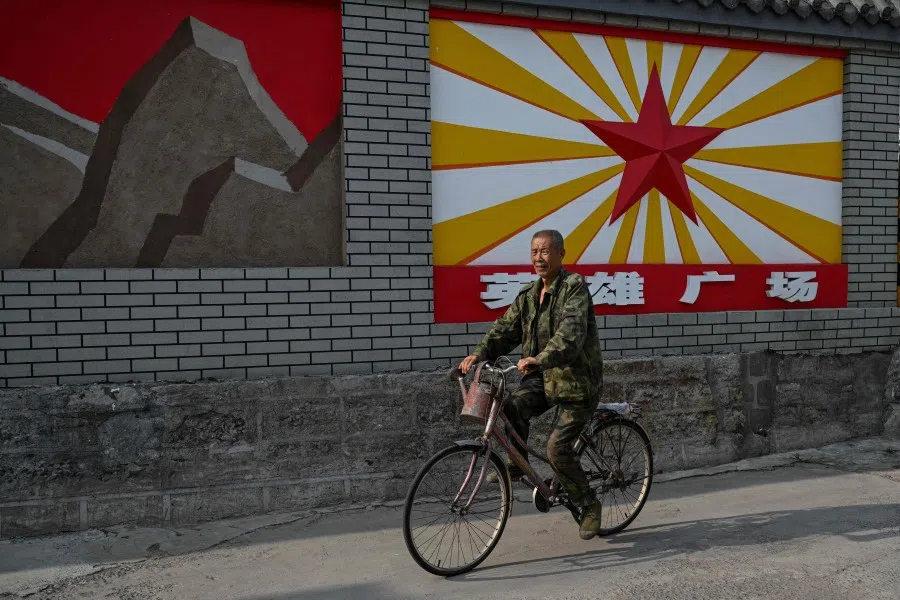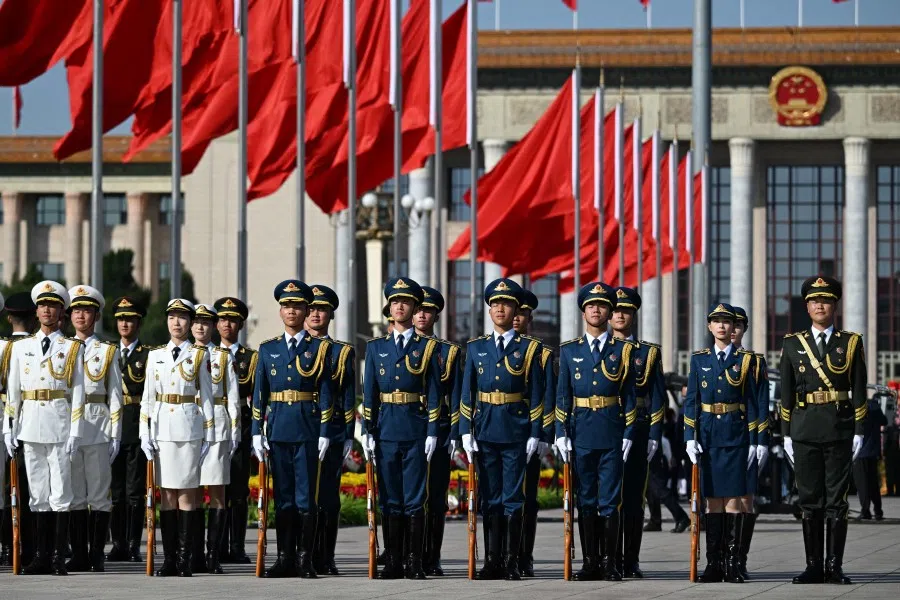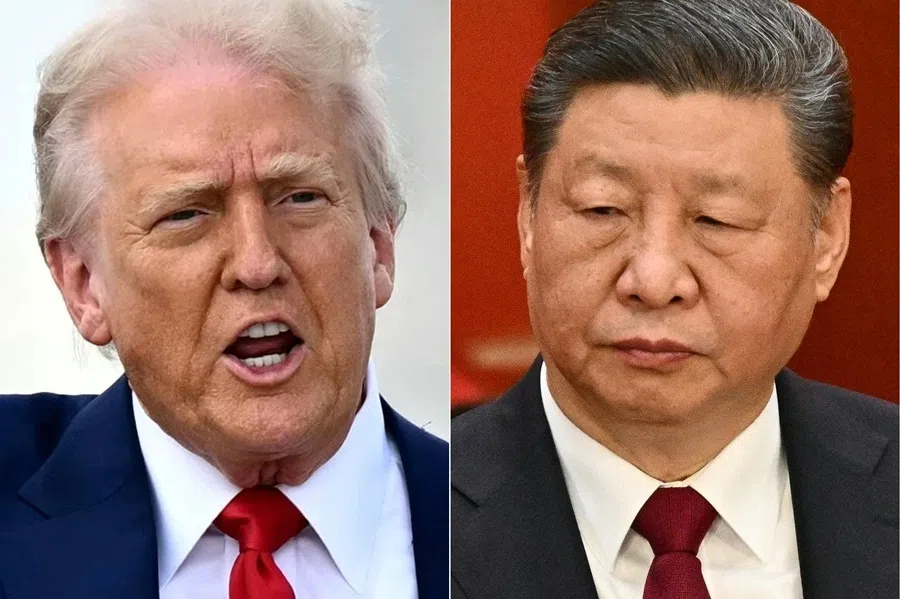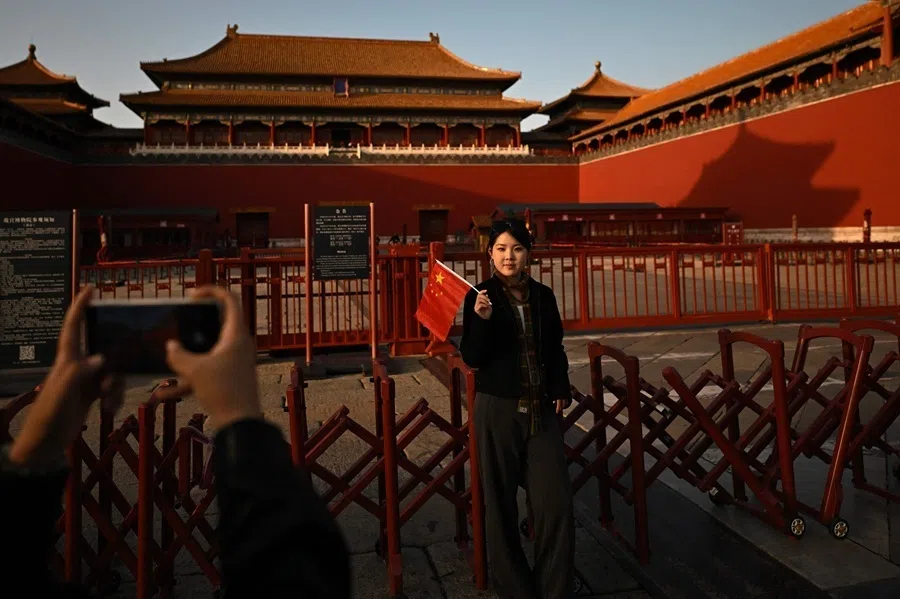Is the PLA ready, and willing, to fight?
Even as China is prepared for military action, that does not mean that it is ready to make the first move. Researchers Chia Shimin and Chen Gang tell us more.

China’s growing military assertiveness has been on display in its recent moves around Taiwan and the South China Sea. Notably, the People’s Liberation Army’s (PLA) April ‘Strait Thunder-2025A’ drills showcased a new approach to chokepoint control alongside other emerging strategies.
More than a hundred aircraft, naval vessels and official vessels were deployed over the course of two days, according to the Taiwan Ministry of National Defence. Strait Thunder-2025A, which was a continuation of the Joint Sword 2024B naval blockade drills in October 2024, coincided with an intensification of “grey zone” tactics in the South China Sea.
These incidents have intensified scrutiny over China’s actual war-making capacity as well as its intentions. The question now looms large: is the PLA ready, and willing, to fight? This article opines that while capable of fighting wars, the PLA does not seek to incite wars; in fact, it is meant for deterrence through strength. It is ready to fight, but prefers not to.
Battle-ready or not?
Xi Jinping’s push for a “World Class Military” by 2035 has driven sweeping PLA modernisation, including structural reforms, advanced capabilities and a major nuclear build-up, aiming to reach parity with the US. According to Xi and his theatre commanders, including those of the Eastern Theatre, the PLA is combat-ready.
In 2019, the PLA’s Defence White Paper said: “Maintaining combat readiness is an important assurance of effective response to security threats and fulfilment of tasks… Efforts are made to strictly act on relevant regulations and procedures, fulfil readiness duties, conduct targeted exercises and training, and maintain standardised order, with a view to staying ready to act when required and effectively carrying out readiness (combat) duties.”
Embedded within this definition are two dimensions of readiness. The terms “effectiveness” and “ready to act” suggest, respectively, both the capability to achieve campaign goals and the intentions, offensive or defensive, to employ force.
In terms of military doctrine, the PLA is seemingly bolstering its battle readiness across capability and intention as it pivots towards “intelligentised” wars, the new mode of conflict on the horizon.

In terms of military doctrine, the PLA is seemingly bolstering its battle readiness across capability and intention as it pivots towards “intelligentised” wars, the new mode of conflict on the horizon. This is evident in the reorganising of the Strategic Support Force into the Information Support Force (ISF), Aerospace Force, and Cyberspace Force.
The ISF’s former communications arm, the Information Communication Base, has been elevated in grade and placed directly under the Central Military Commission as well, alongside the three services (Land, Air and Sea), the Theatre Commands and the Rocket Force.
Recent advances in technology also seem to point in the direction of the PLA’s battle readiness. Instances include the Chinese Shenyang J-35/J-35A fifth generation fighter, which entered service in July 2025, making China the only country besides the US to field two stealth fighter types in operation.
The maturation of China’s airpower is also demonstrated in the success of the Chengdu J-10 fighter jets, which performed brilliantly in the brief armed conflict between India and Pakistan.
Taken together, these developments underscore how the PLA is technologically capable and structurally aligned for modern conflict. However, capability alone does not reveal intent.
Portrayal of battle readiness by People’s Daily
Based on the People’s Daily, a state-owned outlet and authoritative voice on the state’s stance, the People’s Liberation Army appears highly battle-ready. Between 2015, when Xi Jinping came into power, and now, 84 articles on the topic have been published, signalling strong confidence in the PLA’s capabilities.
Across these articles, the terms “Xi”, “military”, “central”, “party”, and “armed” collectively point to the centrality of Xi Jinping in the CCP.

Of these articles, based on a combination of text-mining techniques, the framing of the PLA’s battle readiness appeared in the context of the US-China rivalry. References to the “US” appeared frequently with “Taiwan” and “People”. Indeed, China does seem to see the US as a potential obstacle to its Taiwan claim under the “One China” principle.
Further, China’s latest Defence White Paper would confirm this by asserting: “International strategic competition is on the rise. The US has adjusted its national security and defence strategies and adopted unilateral policies. It has provoked and intensified competition among major countries…” Such framing casts the US’s involvement in the Taiwan Strait as provocative interference in what Beijing regards as part of its territory.
Relatedly, “battle readiness” was situated as defending sovereignty in disputed areas such as the Taiwan Strait. Frequent military exercises around Taiwan and rising PLA sorties crossing the median line, along with increased naval activity around Taiwan, underscore sustained preparedness.
This “battle readiness” was further supported and underscored by Xi Jinping’s strongman rule. Across these articles, the terms “Xi”, “military”, “central”, “party”, and “armed” collectively point to the centrality of Xi Jinping in the CCP. The pairing of “Xi”, “central” and “party” further attests to the importance of the PLA’s party loyalty, sustained through intensified Marxist indoctrination and the propagation of “Xi Jinping Thought” within the PLA.
Xi Jinping’s techniques of purging the PLA’s leaders for alleged malfeasance, pairing command and control with ideological indoctrination, have become a main staple of his iron-fisted rule.
...in Volume V of The Governance of China, the latest volume that contained a compilation of 91 of Xi Jinping’s spoken and written works from 27 May 2022 to 20 December 2024, there were only three military-related speeches...

While ensuring that the PLA’s loyalty is to the party foremost, observers note that indoctrination can ironically affect the professionalism of the PLA: time spent studying the tenets of Xi Jinping’s Thought displaces training, trading operational proficiency for political loyalty. A balance between political reliability and military capability is necessary, but experts note that, in practice, political loyalty often takes precedence in combat.
Xi Jinping’s rhetoric of restraint
Much as the PLA suggests that it is ready to wage war when the occasion calls for it, its true intent appears to be on the side of peacemaking. In Xi’s speech at the commemoration marking the 80th anniversary of the victory of the Chinese People’s War of Resistance Against Japanese Aggression and the World Anti-Fascist War on 3 September 2025, he praised the PLA’s steadfastness as the people’s army while avoiding the term “battle-ready”.
Instead, according to Xi, China will choose to remain on the “right side of history”, pursuing “peaceful development” and building a shared “community” with “all peoples”.
Furthermore, in Volume V of The Governance of China, the latest volume that contained a compilation of 91 of Xi Jinping’s spoken and written works from 27 May 2022 to 20 December 2024, there were only three military-related speeches, all of which focused on strengthening governance and the political commitment of the military as well as reinforcing strategic capabilities in emerging fields.
In his first speech at the seventh Politburo group study session on 24 July 2023, titled “Build a Strong Military Through Stronger Governance,” Xi emphasised combat capability as the “sole criterion for developing the military”, yet made no mention of combat readiness or military preparedness.
His other two speeches in Volume V referred to military readiness and preparedness as the prerequisite to “maritime governance capabilities” and the process through which “the party’s leadership should be extended”. In fact, “maritime military readiness” was regarded as an integral part of China’s maritime governance capabilities, hinting that maritime military readiness was a means rather than an end to safeguard China’s maritime interests.
This implied that war decisions would rest with intra-Party collective leadership rather than personal dictatorship.

Xi further stressed that the party’s principle of democratic centralism would be strictly enforced throughout military preparedness. This implied that war decisions would rest with intra-Party collective leadership rather than personal dictatorship.
In Xi’s report to the 20th Party Congress in 2022 (included in Volume V), combat preparedness ranked after political loyalty, military reform, science and technology, personnel training and the rule of law among the PLA’s next five-year priorities. Political commitment and strong governance have appeared to be more important compared to “combat preparedness”.
It thus seems that “battle readiness” is aimed at future contingencies rather than planned offensive wars. In this context, Xi’s rhetorical restraint in avoiding “battle readiness” while emphasising “peaceful development” also reflects a calibrated effort to signal defensive strength abroad while maintaining internal cohesion.
Preventing war by demonstrating the ability to win it
Eventually, Xi’s emphasis on a strong, strategic deterrent force system is central to understanding China’s combat readiness posture as a response to perceived US threats, especially over Taiwan, and as a means of coercive diplomacy to shape the regional security environment without initiating conflict.
The PLA’s combat readiness signals suggest that the PLA today possesses the technological and organisational capability to fight wars. However, Xi’s strategic calculus and Party control mechanisms reveal likelier intentions of deterrence against external interference in China’s core interests and political survival rather than offensive war. “Battle readiness” in this sense is seemingly not a war plan, but a morally elevated posture, seeking to prevent war by demonstrating the ability to win it, and not provoke it.






